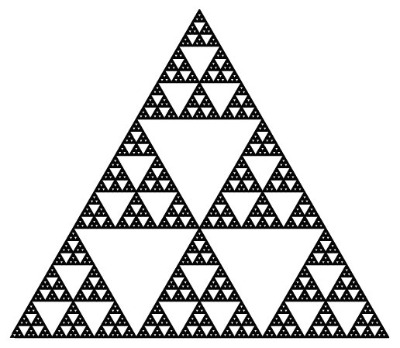Notice
Recent Posts
Recent Comments
Link
| 일 | 월 | 화 | 수 | 목 | 금 | 토 |
|---|---|---|---|---|---|---|
| 1 | 2 | 3 | 4 | 5 | 6 | 7 |
| 8 | 9 | 10 | 11 | 12 | 13 | 14 |
| 15 | 16 | 17 | 18 | 19 | 20 | 21 |
| 22 | 23 | 24 | 25 | 26 | 27 | 28 |
| 29 | 30 |
Tags
- CoreData Filter
- LightWeight Migration
- NSSortDescriptor
- CoreData Concurrency
- NSPredicates
- persistentStoreCoordinator
- leetcode #01
- Swift 고차함수
- Java
- NSManagedObject SubClass
- 2022 부스트캠프
- CoreData
- Associated Value
- Raw value and Associated value
- Persistent store Coordinator
- Swift closure
- iOS Static Library
- iOS Static Library 사용하는방법
- 트레일링 클로저
- Clean swift
- Swift LinkedList
- 1009번
- dateFormatter
- 다익스트라 이해
- expensive operation
- 스위프트 클로저
- Swift
- codability
- CoreData Stack
- 일급 객체
Archives
- Today
- Total
하루를살자
[Swift] LinkedList 본문
What is LinkedList?
- LinkedList 는 Element 간의 연결(Link) 를 통해서 리스트를 구현한 자료구조 이다.

Why LinkedList?
- 연결리스트의 효율성은 배열과 비교가 가장 많이 되는데 이유는 둘다 리스트 형태 를 구현할수 있다는것이다.
- 두가지의 자료구조의 특징을 이해하고 상황에 따라 적절히 사용하기 위해서 각각의 시간 복잡도를 데이터 탐색, 추가, 삭제 3가지로 나누어서 살펴봤다.
데이터 탐색
연결리스트:
특정 데이터를 찾기 위해서 연결되어 있는 요소들을 처음부터 순차적으로 탐색해야하기 때문에 O(n) 의 시간 복잡도를 갖는다.
배열:
배열의 요소는 특정 인덱스를 가지고 있기 이를 통해서 빠르게 특정 데이터를 찾을수 있다. O(1) 의 시간복잡도를 갖는다.
데이터 추가 & 삭제
연결리스트:
데이터를 추가 및 삭제 하는 행위 자체의 시간 복잡도는 O(1) 이지만 특정 위치를 탐색하는데 O(n) 의 시간 복잡도를 갖는다.
이때 추가하려는 위치가 리스트의 맨처음 혹은 맨끝일경우 O(1) 의 시간 복잡도를 갖는다.
배열:
배열의 경우 추가 및 삭제 하려는 데이터의 위치가 맨끝이 아닐경우 요소들의 위치가 한칸씩 밀림으로 O(n) 의 시간복잡도를 가진다.
하지만 맨 뒤일경우 O(1) 의 시간복잡도를 갖는다.
정리
배열: 데이터의 접근과 탐색의 비중이 높게 사용되는 상황에 사용하는게 좋다.
연결리스트: 데이터의 추가, 삭제의 비중이 높게 사용되는 상황에 사용하는게 좋다.
Swift 를 사용한 LinkedList 구현
Node
class Node {
var next: Node?
let data: Int
init (next: Node?, data: Int){
self.next = next
self.data = data
}
}- LikedList 에 사용될 요소, Node 를 구현한다.
- 각 Node 는 다음 Node 를 가르키는 next 변수와 데이터를 담는 data 상수를 갖는다.
LinkedList
class LinkedList {
//1
var head: Node?
//2
var tail: Node? {
var cursor = head
while cursor?.next != nil {
cursor = cursor?.next
}
return cursor
}
//3
var count: Int {
guard var cursor = head else {return 0}
var count = 1
while cursor.next != nil {
cursor = cursor.next!
count += 1
}
return count
}
}- 현재 List 가 가르키고 있는 첫 Node 를 나타내는 head 이다.
- 현재 List 의 끝에있는 Node 를 가르킨다.
- 현재 List 의 Node 의 총 개수를 가진다.
Append
func appendNode(data: Int) {
if head == nil {
self.head = Node(next: nil, data: data)
return
}else {
tail?.next = Node(next: nil, data: data)
return
}
}
InsertAt
func insertAt(index: Int, data: Int){
var curr = head
var prev: Node?
// head 가 없을시
if curr == nil {
head = Node(next: nil, data: data)
return
}
//index 가 리스트의 범위를 넘어 갈때
if count <= index {
tail?.next = Node(next: nil, data: data)
return
}
//다음 노드로 이동
for _ in 0..<index {
prev = curr
curr = curr?.next
}
//0 번째 요소에 추가하려고 할떄
if prev == nil {
head = Node(next: curr, data: data)
//그외
}else {
prev?.next = Node(next: curr, data: data)
}
}
RemoveLast
//To delete the last node of a linked list, find the second last node and make the next pointer of that node null.
func deleteLast() {
if head == nil {return}
if head?.next == nil {
head = nil
return
}
var cursor = head
//Cusor 의 다음 node 가 아무것도 없다면, 즉 현재 head 의 next 에 더이상 새로운 node 가 없다면 return
while cursor?.next?.next != nil {
//head 뒤에 node 가 더 있다면 cursor 를 다음 node 로 만든다.
cursor = cursor?.next
}
cursor?.next = nil
}
RemoveAt
func deleteAt(index: Int) {
var curr = head
var prev: Node?
if head == nil {return}
for _ in 0..<index {
if curr?.next == nil {break}
prev = curr
curr = curr?.next
}
//주어진 Index 가 0 일떄
if prev == nil {
head = head?.next
return
}
//다음 노드가 없을때, 즉 마지막 요소일때
if curr?.next == nil {
prev?.next = nil
return
}
//그 이외의 케이스
prev?.next = curr?.next
curr?.next = nil
}
'Swift' 카테고리의 다른 글
| [Swift] Closure 의 Capture, CaptureList (0) | 2022.08.06 |
|---|---|
| ARC (Automatic Reference Counter) (0) | 2022.08.06 |
| [Swift] Expansive DateFormatter : 어떻게 사용해야할까? (0) | 2022.06.09 |
| Swift - Closure (2) : Trailing Closure (0) | 2022.02.27 |
| Swift - Closure (1): 표현식 (0) | 2022.02.27 |
Comments


